The Ashoka Pillar located at Lumbini, Nepal marks the birthplace of Gautam Buddha and was built by emperor Ashoka during the 3rd century BCE. This monument is now a UNESCO heritage site, symbolizing peace and Buddhism for the world. It attracts numerous pilgrims throughout the year. Besides, the pillar inscription provides detailed evidence of Ashoka’s tax exemptions, which helped confirm his devotion to Buddhism. This pillar remains the centrepiece as it is a pivotal artefact granting a connection to Ashoka’s support of Buddhism and stays a holy place for pilgrims all over the globe.
Quick Details About Ashoka Pillar In Lumbini
Location: Lumbini, Rupandehi District, Nepal
Built-in: 249 BCE by Emperor Ashoka
Height: Around 6.7 meters (22 feet) tall
Significance: Marks the birthplace of Gautam Buddha
Inscription: Written in Brahmi script, confirming Ashoka’s visit
Entry Fee: NPR 100-500 (varies by nationality)
Timings: 6 AM – 6 PM daily
UNESCO Heritage Site: Recognized in 1997
Where To Stay: Lumbini Garden Lodge, Lumbini Village Lodge
Where To Eat: Lumbini Food Point, The Doko Restaurant & Bar
Location
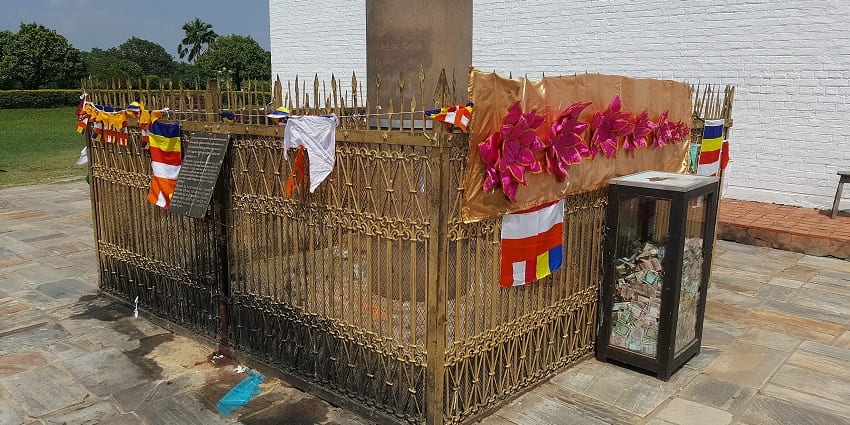
Photo: Itisamis / Wikimedia Commons
The Ashoka Pillar is located in Lumbini Garden, a sacred site in Rupandehi District, Nepal. It stands near the Maya Devi Temple, marking the exact birthplace of Gautam Buddha. The area is well-maintained, surrounded by monasteries, stupas, and lush greenery, making it a peaceful pilgrimage destination.
How To Reach
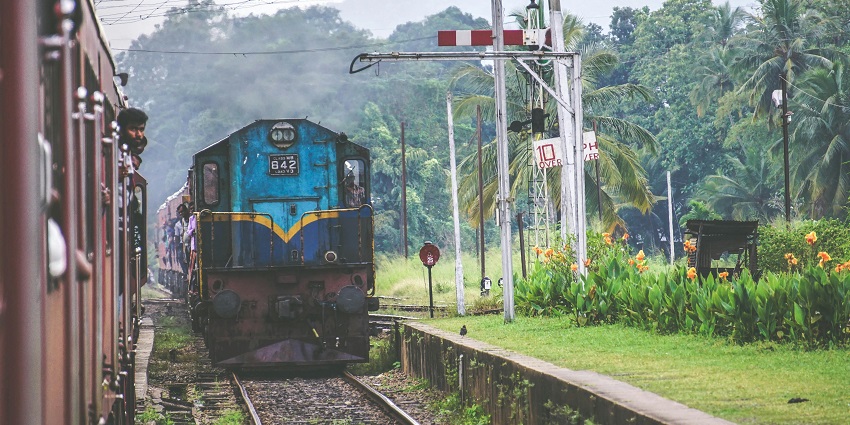
Photo: Prabath Gamage / Pexels / Image For Representation Only
This famous destination is well-connected by road and airport and it is easy to reach there without going through a lot of trouble.
By Air: Nearest airport from this place is Gautam Buddha International Airport which is just 15 km away. From there tourists can reach their destination by a private taxi or public transport.
By Train: Nearest railway station is Gorakhpur, India which is approx. 100 km from Lumbini. From Gorakhpur, you can take a bus or taxi to reach the Nepal border and then continue to Lumbini.
By Road: From Kathmandu, this destination is only 260 km away and it takes approx. 7-8 hours by bus/taxi. Whereas from Sunauli (India-Nepal border it takes only 1 hour by taxi.
Things To Do At Ashoka Pillar, Lumbini
From exploring the great Maya Devi temple to taking walks in the serene garden for relaxation, these things are recommended for a memorable trip.
1. Visit The Maya Devi Temple
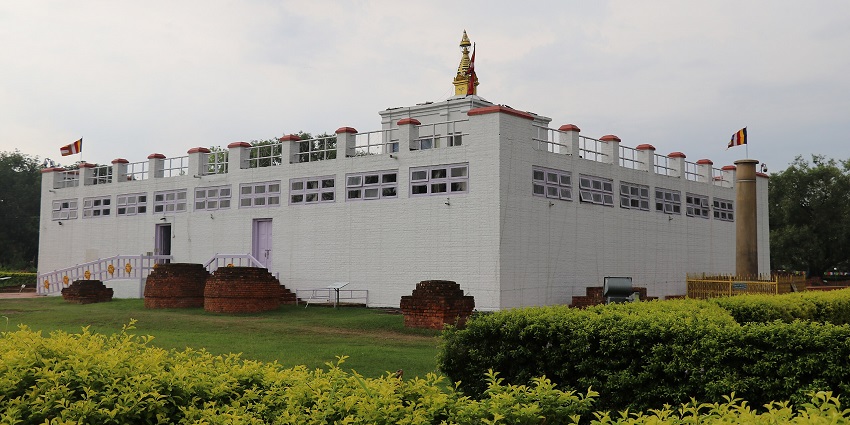
Photo: Imsurit / Wikimedia Commons
The Maya Devi Temple is the most revered site in Lumbini, as it marks the exact location where Queen Maya Devi gave birth to Prince Siddhartha (Buddha). The temple houses a stone relief depicting Maya Devi and infant Buddha, as well as ancient ruins dating back to the 3rd century BCE. Pilgrims from around the world visit the temple to offer prayers and meditate. The spiritual aura and historical significance make this temple a must-visit, offering a glimpse into Buddhism’s origins.
Best Time To Visit: Anytime during the day
2. Meditate In The Lumbini Monastic Zone
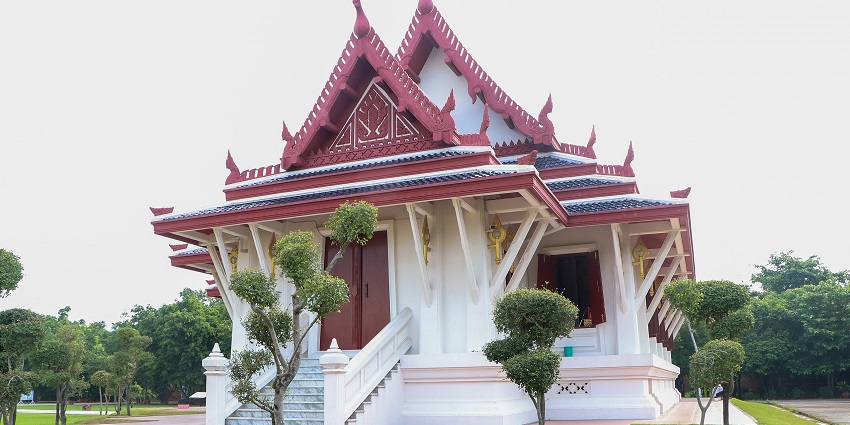
Photo: Ricky Partel / Wikimedia Commons / Image For Representation Only
The Lumbini Monastic Zone is a beautifully designed area filled with Buddhist monasteries built by various countries, including China, Thailand, Myanmar, and Japan. Each monastery showcases unique architecture and represents different Buddhist traditions. Visitors can participate in meditation sessions conducted by monks or simply enjoy the tranquillity of the surroundings. The peaceful environment, combined with the chanting of monks, provides a deeply spiritual experience for those seeking inner peace and enlightenment.
Best Time To Visit: Early Morning
3. Walk Around The Sacred Garden
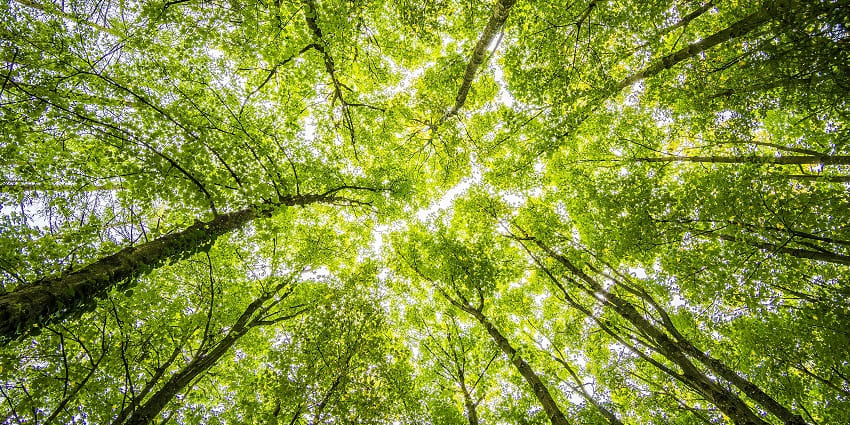
Photo: Felix Mittermeier / Pexels / Image For Representation Only
The Sacred Garden of Lumbini is a serene and well-maintained space surrounding the Ashoka Pillar and Maya Devi Temple. It is believed to be the exact spot where Buddha took his first steps. The garden is adorned with lush greenery, ancient stupas, and beautiful walkways, making it a perfect place for visitors to relax and reflect. The presence of prayer flags, lotus ponds, and centuries-old ruins enhances the charm of this sacred space, offering a blend of history, spirituality, and natural beauty.
Best Time To Visit: Early morning or late evening
Places To Visit In And Around Ashoka Pillar
These places are a must-visit to make the trip memorable and enjoyable with family or friends.
1. World Peace Pagoda

Photo: Ashishranamgr1 / Wikimedia Commons / Image For Representation Only
The Shanti Stupa or the World Peace Pagoda is a white Buddhist stupa built by Japanese Buddhists to symbolize peace and harmony. Situated just 2 km away from the Ashoka Pillar, this monument is tall and offers breathtaking views of the surrounding area. One can meditate and reflect here in the pagoda while Buddhist monks pray here. The calm environment, along with the picturesque structure of the stupa, is a serene destination to visit in Lumbini.
Distance: 2 km
Timings: 6 AM – 6 PM
2. Lumbini Museum

Photo: Derzsi Elekes Andor / Wikimedia Commons / Image For Representation Only
Lumbini Museum is a historical and information centre with ancient sculptures, artefacts, and photos depicting Buddha’s life and the history of Lumbini. It is merely 1.5 kilometres from the Ashoka Pillar and provides a better appreciation of the significance of the location. One is exposed to archaeological finds, ranging from inscriptions to coins and terracotta items of the Kushan and Mauryan periods. If you’re keen on history and Buddhism, this museum is a treasure trove of information.
Distance: 1.5 km
Timings: 9 AM – 5 PM
3. Tilaurakot, Ancient Kapilavastu
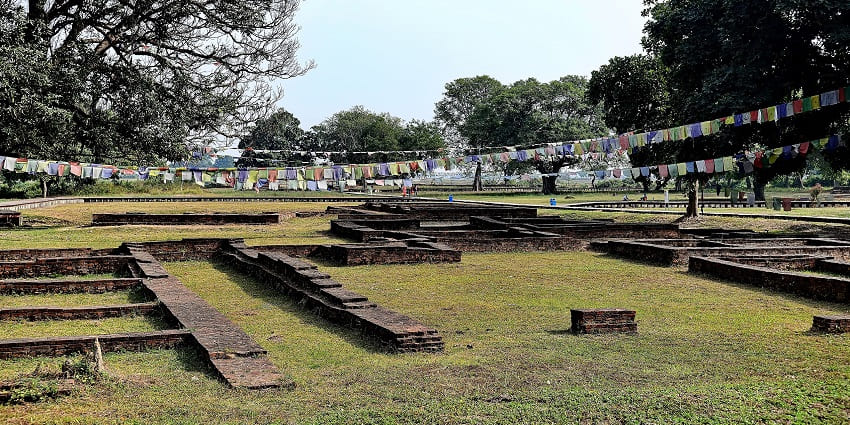
Photo: Rajesh Dhungana / Wikimedia Commons
Tilaurakot is an archaeological site believed to be the ancient capital of Kapilavastu, where Prince Siddhartha (Buddha) spent his early years before renouncing the world. Located 27 km from the Ashoka Pillar, the ruins here include ancient walls, gates and foundations of palaces and temples. Walking through Tilaurakot, visitors can imagine the grandeur of the kingdom where Buddha lived as a prince. The site is less crowded and offers a peaceful and spiritual experience, ideal for those interested in Buddha’s early life.
Distance: 27 km
Timings: 6 AM – 6 PM
4. Myanmar Golden Temple
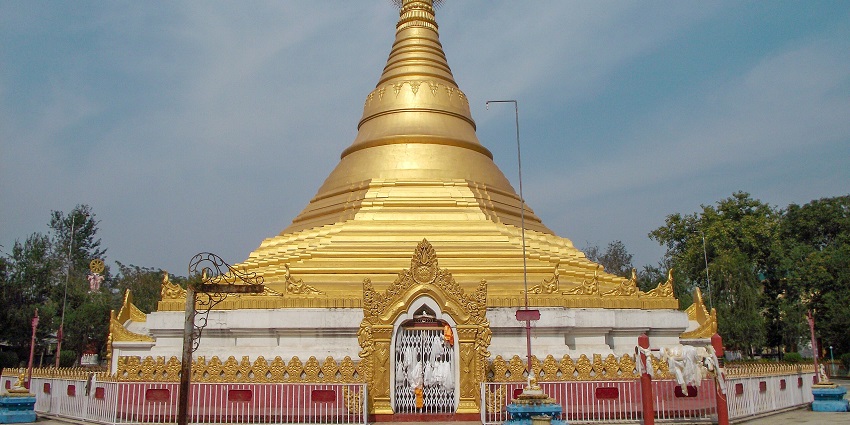
Photo: Pnabin61 / Wikimedia Commons
The Myanmar Golden Temple is one of the oldest temples in Lumbini, built in traditional Burmese style. Located 3 km from the Ashoka Pillar, the temple’s golden spires and intricate carvings make it an architectural masterpiece. Inside, visitors can see beautiful Buddha statues, sacred relics and murals depicting Buddha’s life. The temple complex also includes a meditation hall, where visitors can sit in silence and experience spiritual calm. It is a peaceful place that beautifully represents Myanmar’s Buddhist culture.
Distance: 3 km
Timings: 6 AM – 6 PM
Other Factors To Consider
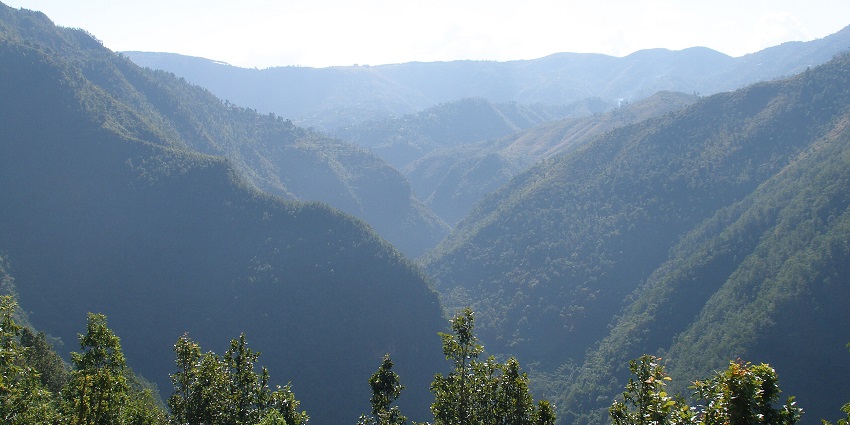
Photo: Vyacheslav Argenberg / Wikimedia Commons / Image For Representation Only
Average Cost Of The Trip: A trip to the Ashoka Pillar in Lumbini involves various costs, including travel, accommodation, meals, and local transportation. The total expense depends on the mode of travel, with flights from Delhi to Kathmandu costing between ₹10,000 – ₹15,000 for a round trip, followed by a bus or domestic flight to Lumbini. Budget travellers can opt for overland buses, which cost around ₹2,000 – ₹3,000. Accommodation ranges from ₹2,000 – ₹3,000 per night in budget hotels, while daily meal expenses can vary from ₹600 – ₹1,200.
Tips For Travellers:
- Flights and buses to Lumbini can get booked quickly, especially during peak seasons. Consider booking your tickets early to secure better prices and convenient schedules.
- While major hotels and restaurants may accept cards, small vendors and local transport services prefer cash. Ensure you have enough Nepalese Rupees for hassle-free transactions.
- Choosing accommodation near the main attractions can save time and transportation costs, allowing you to explore the historic sites conveniently.
The Ashoka Pillar in Lumbini is not just a historical monument but a symbol of peace and Buddhism. Surrounded by sacred sites like the Maya Devi Temple, World Peace Pagoda and Lumbini Monastic Zone, it offers a profound spiritual experience for visitors. Whether you’re a history enthusiast, a traveller seeking tranquillity, or a Buddhist devotee, Lumbini is a must-visit destination. Plan your journey during the best season to enjoy a seamless travel experience. Make your visit hassle-free and memorable, plan your trip with TripXL now.
Cover Photo: Shadow Ayush / Wikimedia Commons


 WhatsApp
WhatsApp
 Twitter
Twitter









